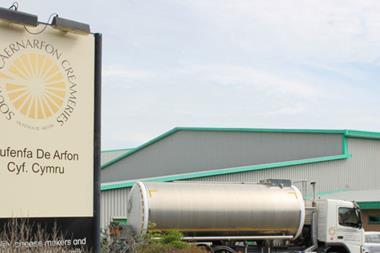An India-based SME experienced growing pains as demand for its products swelled. IRM’s Hersh Shah talks us through the rescue plan: a formalised approach to risk and a risk culture built on accountability and communication.
The company in question was an SME based in India with turnover in the region of $150m, specialising in producing handicrafts and home decor items.
Established in 2008, the firm exports products to Europe, North America and other Asian countries. With an increasing global demand for its products, the company was facing operational, branding, financial, and market-related risks.

There was no formal risk management system in place, leading to financial losses and missed opportunities.
Furthermore, the absence of a risk culture made it difficult for employees to identify, communicate or mitigate threats in real-time. This was leaving loyal employees feeling demotivated.
Hersh Shah, CEO, Institute of Risk Management (IRM) – India Affiliate, explains how the organisation engaged a risk consulting firm and executed the following five-stage approach.
RISK BRAINSTORMING: Identification and assessment
Workshops were conducted for all levels of employees to help them identify potential risks in their respective areas, something known as ‘risk brainstorming’, a common technique in risk identification.
“A risk committee was then formed, comprising members from different departments, to review and prioritise risks based on likelihood and impact. This is also to make sure decisions are not biased and there is enough focus on reality,” says Shah.
STRATEGISE: Developing mitigation plans
After the necessary reviews and analysis, for each high-priority risk, a mitigation strategy was devised depending on an agreed matrix. For example, using a 4x4 matrix as the organisation “didn’t want fence sitters,” says Shah.
One new development from this process was that when it came to addressing currency fluctuation risks – a major concern for exporters – the company started entering into forward contracts.
IN REAL TIME: Embedding risk management in operations
With the planning process completed and the organisation having undertaken a thorough review of its current approach, it could move onto the practical application of its new view of risk.
“Processes and standard operating procedures were revamped to include risk checkpoints and a formal risk appetite statement was rolled out to ensure that any decision beyond a certain value would be escalated to an independent committee,” says Shah.
“For instance, the procurement team started assessing vendor reliability and geopolitical risks before finalising contracts.”
ACCOUNTABILITY AND EMPOWERMENT: Working on risk culture
Realising that its new approach to risk must move beyond processes and documentation, the company further focused on its risk culture.
Regular training sessions were introduced, emphasising the importance of risk management, including nominating some employees for IRM’s global ERM exams, says Shah.
Employees were encouraged to communicate risks freely and a reward system was introduced for those who identified significant threats.
”Risk incentives were initiated to ensure people report risk events.”
TECHNOLOGY: Developing supporting systems
Finally, this approach to risk also needed to be underpinned by supporting technology. Shah explains: “A digital dashboard was developed to monitor key risk indicators, providing real-time data to decision-makers.
“Feedback loops ensured that any risk incidents were recorded and analysed for future prevention. Risk incentives were initiated to ensure people report risk events.”
OUTCOMES: Happy people, Happy balance sheet
There were four major outcomes and improvements the organisation experienced as part of its new approach:
- Financial stability
- Improved decision-making
- Employee engagement
- Increased competitiveness
“By hedging against currency fluctuations and securing reliable vendors, the company saw a marked decrease in unexpected costs,” says Shah. “And with a clear understanding of risks, the management made better-informed choices regarding new markets, product innovations and partnerships.”
“The new risk culture meant employees felt more involved and accountable, leading to improved morale and performance. The organisation also started gaining an edge over competitors as it could manoeuvre market uncertainties better and offer more consistent service and product quality,” he says.
“This case study illustrates the importance of proactive risk management, especially for SMEs aiming for global outreach.”
Shah believes embedding a risk culture and structured risk management approach proved invaluable for the organisation.
He concludes: “It not only stabilised their operations but also positioned the company for sustainable growth in a competitive market. This case study illustrates the importance of proactive risk management, especially for SMEs aiming for global outreach.”














No comments yet